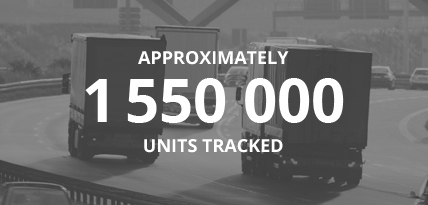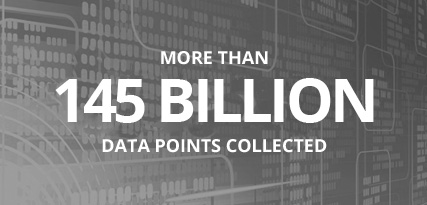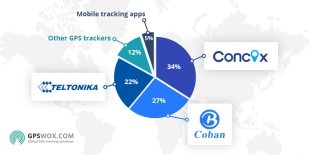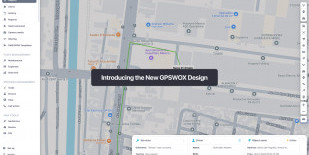
Everything you need to know about telematics and fleet management
Are you a fleet manager? If yes, you might have a long wish list for your business. Your list may include things such as meeting compliance standards, reducing fuel costs across your whole fleet, and improving your fleet’s safety record. The good news is that you can accomplish all these goals with telematics.
There is no doubt that a fleet of vehicles plays an important role in the day-to-day operations of many organizations, and that successful fleet management is crucial. Of cource, if a vehicle is not available when somebody needs it, that person will not really be able to perform their job. You should also keep in mind that operating a fleet involves considerable costs, like fuel expenses. This technology helps improve the safety and reliability of transport systems, and also optimizes cargo motion routes while reducing costs.
Given its significance and the immense costs involved, many organizations hand the reins over to a fleet manager. This is why a fleet manager is responsible for reducing costs while delivering high availability of a reliable and safe fleet of vehicles.
1What is Telematics?
We can define telematics as the convergence of location technology, wireless communications, and in-vehicle electronics that are used to seamlessly integrate the automobile into the modern information age. If you manage an entire fleet of vehicles, you probably encounter this type of electronic logging device on a daily basis.
Also, it is worth noting that this technology represents the convergence of many diverse professionals as well as departments. Some of them are IT, manufacturing, networking, engineering, software, and hardware, among others.
So, we can say that telematics is a comprehensive system that collects valuable data in order to provide you with actionable insight, information, and guidance to improve your fleet management operations. Keep in mind that the best systems help save the time of a fleet operators, providing valuable information to:
- Effectively track vehicle location
- Oversee driver behavior
- Monitor diagnostics, such as warning lights
- Track fuel efficiency and usage
- Plan routes
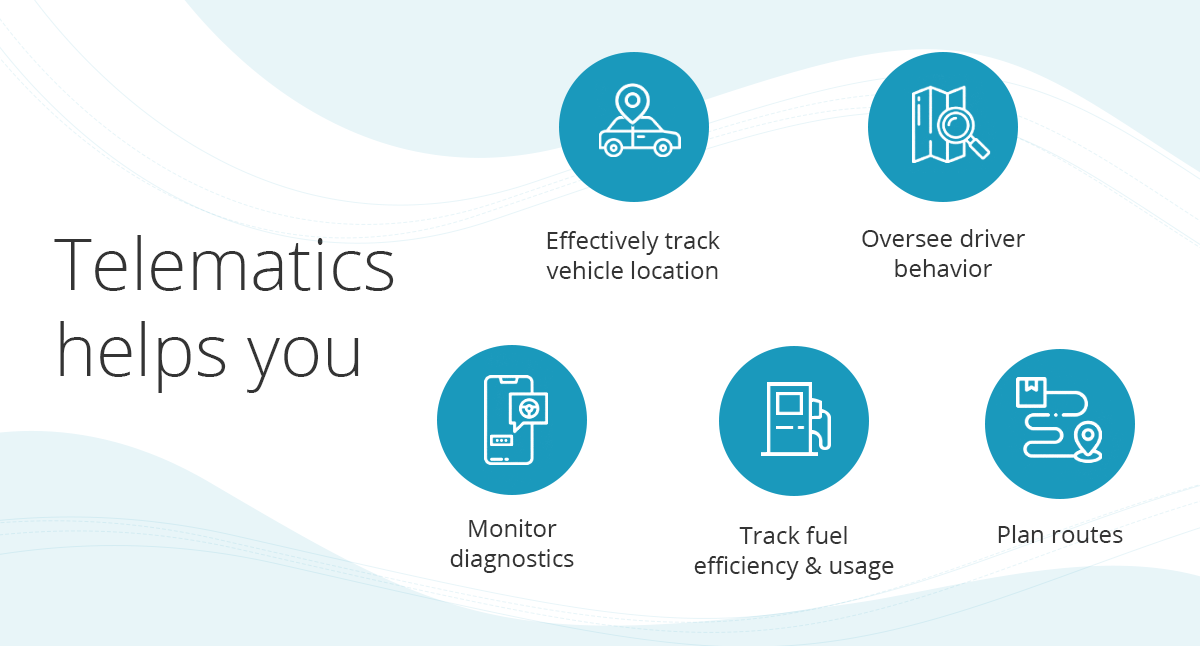
There is no doubt that this technology has taken off recently because of the increasing use of the internet as well as a surge in the number of telecommunications networks which can easily transfer data and information to offices in real-time for different purposes, such as fleet management.
2What is Fleet Telematics and How Does It Help Fleet Management?
Did you know that in the trucking industry, vehicle telematics is used to collect data using a combination of sensors, GPS (Global Positioning System) technology, and various onboard diagnostics codes? Also, note that the gathered data usually includes driver behavior, vehicle location, vehicle activity, as well as real-time engine diagnostics.
Vehicle or fleet tracking & management is used for describing vehicle onboard communication applications and services that communicate with each other through GPS receivers as well as other tracking devices. Fleet management via vehicle tracking is one of the most common applications of this. Keep in mind that GPS tracking systems continuously collect data through mobile vehicle units. The data is then transferred via these GPS receivers to a server that feeds it into the system platform. After that, the data is processed and is ready for display in a clear and understandable structure.
The data is also simultaneously analyzed and archived, making it easier and quicker to make informed decisions - one of the biggest benefits of telematics. It is worth noting that his technology is continuing to increase in popularity as a result of high business demand as well as regulatory requirements.
One of the leading fleet management software providers is GPSWOX, which has fleet tracking, management and telematics solutions for multiple industries.
3How Does Telematics Work?
Did you know that at the early stages of development, telematics data was mainly collected by defferent tracking equipment as well as onboard computers? With the increase in the popularity of mobile phones, data such as engine details, vehicle malfunctions, and fuel efficiency were combined with other phone data. This makes it useful for not just equipment managers, but overall fleet and vehicle managers as well.
It is worth mentioning that telematics works with a piece or multiple pieces of technology that are installed in a vehicle in order to monitor its status. Note that this usually includes information, such as speed, fuel efficiency, location, and driver hours of service, asset tracking and even route optimization.
In most cases, the GPS tracking device is usually connected to a vehicle’s onboard diagnostics port using a normal SIM card. Note that a modem allows seamless communication of the gathered data through a wireless network to the main server.
The device captures the data to be tracked through GPS systems that interfaces with a vehicle’s onboard system. And then, the onboard technology transfers the navigation system data through a communication linkup with the fleet tracking system, which is usually at the company’s office. Lastly, the data is recorded and displayed to be analyzed and assessed to improve fleet practices - given that you’re using an adequate fleet management solution.
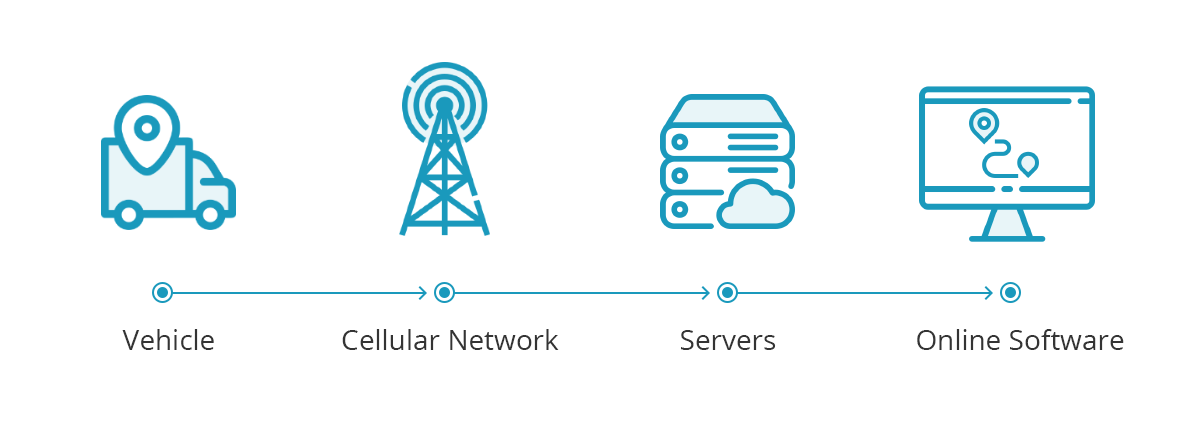
4Devices and Software
Usually, data is captured by a small device that is installed in the vehicle itself. The device collects, stores, and then transmits data about the vehicle’s performance, usage, and condition, etc. Far from being only having business use cases, this.
Did you know that there are many types of GPS devices available on the market that offer different functionalities and unique benefits? Also, it is worth noting that the most secure and accurate tracking devices are hardwired. And these devices provide you with tamper-proof functionality as well as a wider range of connectivity to many peripheral devices, which is great.
5The Benefits of Vehicle Telematics
Telematics has certainly been shown to have many benefits for organizations that use the technology, especially in terms of fleet management and specifically improving fleet vehicles. Some of them are as follows.
Fuel Efficiency
You probably know that fuel is one of the most significant costs that a commercial fleet incurs. You can use data from vehicle telematics systems in order to analyze driving practices and driving habits, and improve your fuel efficiency. Fuel management is often affected by many problems. Some of them are:
- Speeding
- Inefficient routing
- Excessive idling, and
- Unauthorized vehicle use
You can use this to prevent idling, detours, and other types of fuel-wasting driving behaviors, to improve your overall fuel consumption.
Note that as these devices can help in monitoring and correcting all the problems mentioned above, they are one of the best ways to lower your fleet’s fuel costs and fleet maintenance overall.
Preventative Maintenance
Did you know that these systems can help you not only monitor the drivers performance but also keep you updated on the condition and state of your vehicles? Keep in mind that preventative vehicle maintenance is usually based on mileage, with inspections and services performed routinely after a vehicle has successfully completed a specific number of miles.
With certain products and telematics data, you can get easily understandable reports, as well as automated scheduling based on, for example, odometer readings or engine run-time. This will give you valuable insights to assist in the timely creation of rigorous and detailed maintenance schedules, minimizing vehicle downtime.
Increase Efficiency
Another benefit is that drivers who know that their behavior is being closely monitored tend to perform better and comply with the company as well as regulatory standards. This can help reduce accidents and minimize damage to your vehicles and freight.
Improve Safety
By closely monitoring vehicle and driver activity and driving practices, this data allows your company to make timely decisions regarding the type of fleet-wide training programs as well as driving guidelines that you can implement to improve safety and compliance in your organization.
As a fleet manager, you can also develop training programs and even individual coaching sessions on the basis of telematics data, like harsh braking, in order to help increase driver safety.
Did you know that some programs also allow you to provide incentives to the drivers for using the best safety communications policies and practices in their daily routines? And this means you can easily gamify your safety program and ensure that you coach drivers on being safer on the road. This will help reduce not just harsh braking, but also overall alertness and driver safety.
Optimize Vehicle Performance
The latest vehicle sensors and devices can deliver timely alerts about engine problems and many other diagnostic issues while alerting routing centers when your vehicles are out of service. Note that the cache of vehicle data is likely to help with drive fleet overhaul as well as replacement planning, which is convenient.
6Uses and Applications
These days some of the most popular uses of telematics entail internet connectivity using mobile data from smartphones, vehicular diagnostic or breakdown reporting systems, and intelligent driving navigation.
There is a long list of many other applications and uses, but some of the major ones include:
- Local business search and recommendation
- In-vehicle entertainment
- Intelligent fuel allocation
- En route news as well as weather and traffic updates
- Real-time and timely data communications
- Location sharing and reporting
- Wireless safety alerts
- Hazard alerts
- Theft response
- Roadside and emergency assistance request systems
- Freight trailer and container tracking
- Vehicle performance measurement

Carsharing
Did you know that many services, like Zipcar, Lyft, Car2Go, and Uber, etc. presently leverage this technology in order to track PAYD (Pay-as-You-Drive) vehicles, bill users, and even help new customers in finding empty cars. And this shows the immense potential of telematics in this sector.
Compliance
As these systems automatically and electronically track vehicle drive-time, they can make it much easier and quicker to maintain driver hours’ compliance, which is great not just for fleet managers, but also compliance managers. Fleet managers may also use telematics systems for tracking driving hours, and many providers can even streamline workflows that are associated with certifying, editing, and annotating your tachograph data in your modern fleet.
Auto Insurance
Note that car sensors and smartphone applications can provide driver behavior and vehicle operation data to insurance organizations so they can more accurately judge various risks as well as determine price insurance for specific types of vehicles and individuals. Keep in mind that this is called Usage-Based Insurance (UBI), and is sometimes called PAYD Insurance. This type of usage-based insurance is providing great opportunities in the insurance telematics industry.
Some of the factors taken into consideration include the following:
- Driving times
- Distances
- Routes
- Speeds
- Acceleration, and
- Braking
And it is worth noting that for some drivers willing to provide their data or integrate the insurance company’s software or hardware into their vehicle or mobile device, insurers have slashed premiums by up to 30%.
7What the Future Holds
While telematics is a novel field that has emerged comparatively recently, there is no doubt that it will only continue to develop and improve as technology advances. We may, in particular, see more innovative developments coming out in relation to big data that can really shape the future of telematics. Keep in mind that as technological wonders, such as self-driving cars, start to see more deployment, fleet tracking and management can play a bigger role in the IoT (Internet of Things).
We can say that the rising popularity of fleet tracking, especially in the automotive sector, has certainly been a big turning point for fleet safety and efficiency. And as it continues gaining momentum, there are some emerging technology trends you have to keep an eye on. We know that data is at the center of any robust telematics platform. However, understanding that particular data and then actually acting on it can often be challenging.
This is why you should expect to see many GPS tracking and management solutions present their customers with intelligent tools that can help weed through the raw data.
Sensors, cameras, as well as more advanced GPS, have definitely led to better self-driving cars. Although many early semi autonomous driving systems are not perfect, many people think that fully autonomous driving is certainly the way of the future.
Also, it is worth noting that the unseating of many 3G cellular networks is a key trend that will likely see a significant rise as most providers in the country connect to much faster 4G and LTE networks. This switch is likely to trigger many device replacements in most fleets that are still using 3G systems more than a decade old.
While the human element will certainly remain prominent, note that autonomous cars, coupled with advanced telematics, have the immense potential to considerably reduce operating costs, automate mundane tasks and increase hours of service.
For a leading solution in GPS fleet tracking, management and telematics, make sure to check out GPSWOX’s fleet tracking and management software.
Start Successful GPS Tracking Business Today!

